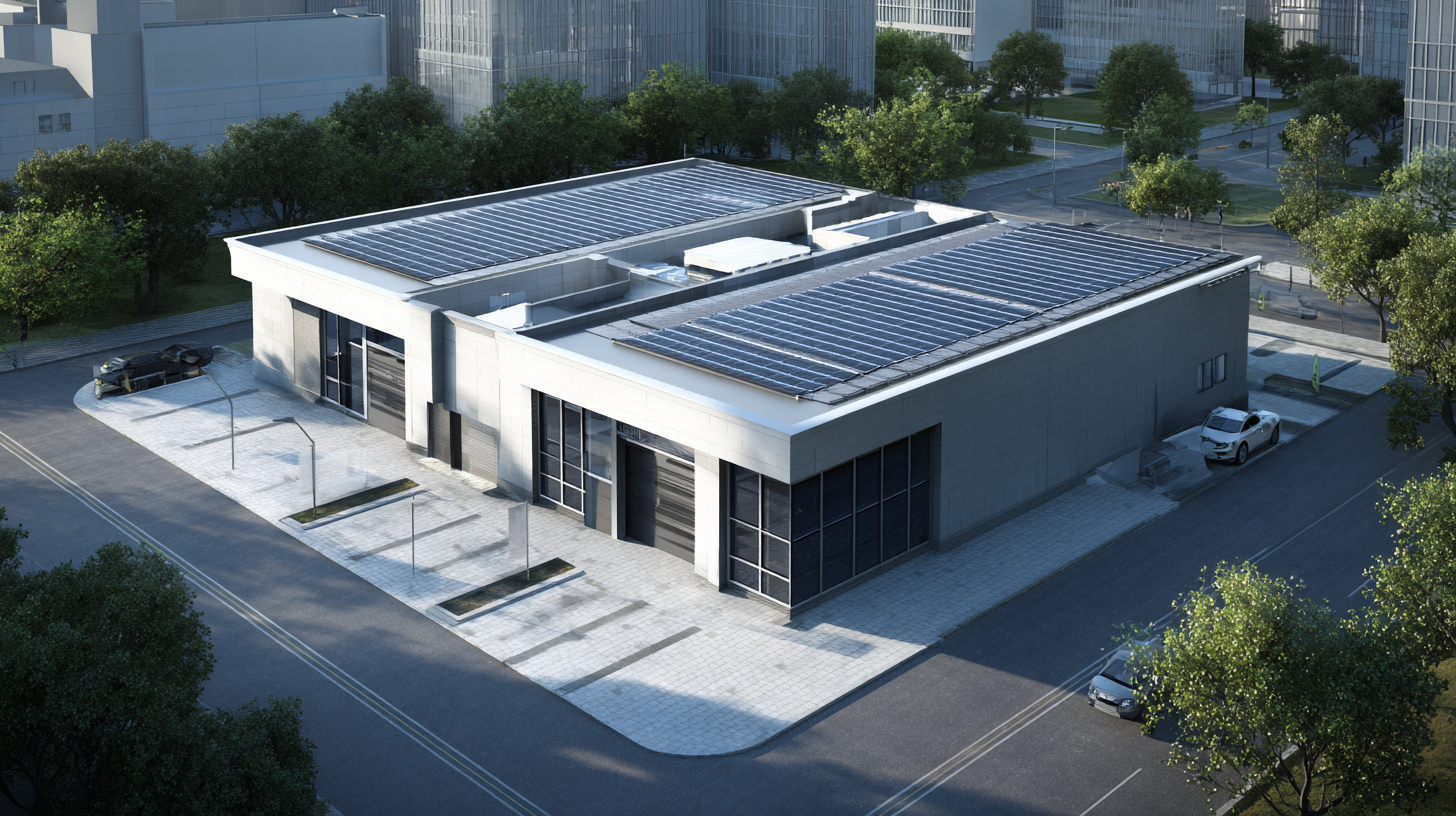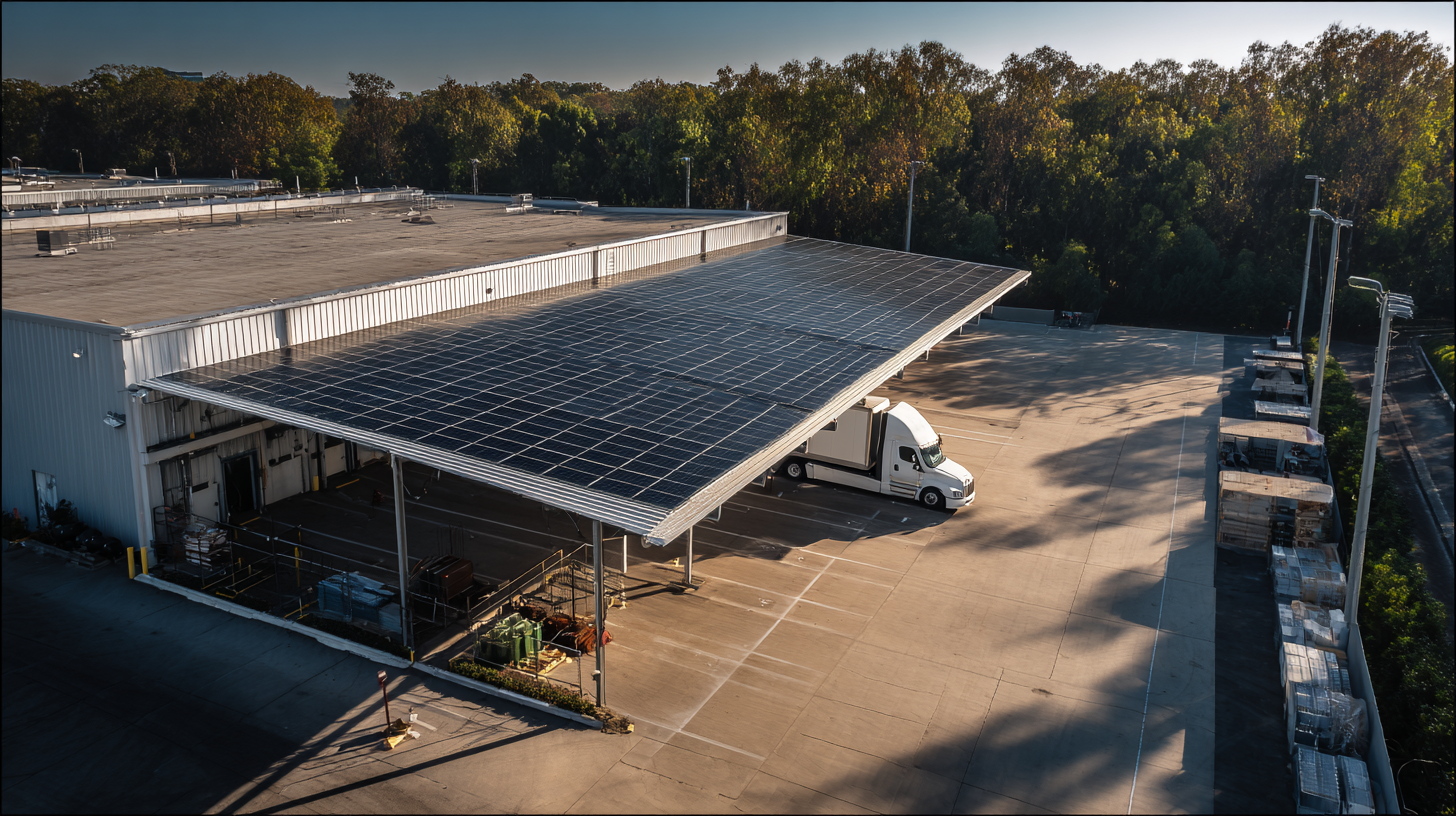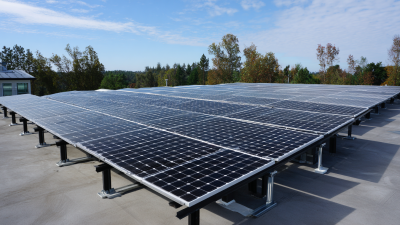ALL PRODUCTS
- Solar Panel
- Hybrid Inverter
- Lithium Battery
GSB SOLAR LITHIUM BATTERIES
- Gel Battery
- Solar Street Lights
- Pump Inverter
In an era where energy efficiency is paramount, optimizing a solar warehouse is critical for businesses aiming to reduce costs and enhance sustainability. According to the International Renewable Energy Agency (IRENA), warehouses and distribution centers account for approximately 20% of total supply chain energy consumption. Implementing energy-efficient practices in these facilities can lead to significant savings, with studies indicating that up to 30% of energy usage can be mitigated through smart design and technology integration. As more companies shift towards renewable energy sources, a solar warehouse equipped with advanced energy management systems not only bolsters operational efficiency but also supports corporate sustainability goals. This guide will explore practical strategies to maximize energy efficiency in solar warehouses, driving both environmental benefits and improved bottom lines.

Maximizing the solar panel installation in your warehouse is essential for achieving optimal energy output and reducing operational costs. Start by assessing the roof space and structural integrity of your warehouse to ensure it can support the weight and installation of solar panels. Utilizing a professional assessment will help identify any necessary reinforcements and the ideal panel layout to capture maximum sunlight throughout the day.
In addition to the initial setup, consider implementing a combination of fixed and adjustable solar panels. Fixed panels will provide a consistent energy output, while adjustable panels can be tilted to follow the sun’s path, thereby increasing efficiency during different seasons. Additionally, incorporating energy storage systems, such as batteries, allows for the excess energy produced during peak hours to be stored and utilized during periods of low production or high demand, further enhancing your warehouse’s energy efficiency.
Implementing an efficient Energy Management System (EMS) in your solar warehouse can significantly enhance operational efficiency and energy sustainability. An EMS serves as a central platform to monitor, control, and optimize energy consumption within the facility. By utilizing real-time data analytics, warehouse managers can identify patterns of energy use, pinpointing areas where energy is wasted or where improvements can be made. This insight allows for better decision-making regarding energy procurement and use, ultimately reducing costs and optimizing workload.
Moreover, integrating renewable energy sources, such as solar panels, into the EMS can further amplify efficiency. These systems can intelligently adjust energy use based on availability from solar generation, ensuring that the warehouse operations utilize clean energy for their processes. By automating energy flows and implementing smart energy storage solutions, facilities can harness the full potential of solar energy, minimizing reliance on grid power during peak times. Emphasizing the importance of a robust EMS in the warehouse not only contributes to operational efficiency but also aligns with broader sustainability goals, paving the way for a more eco-friendly future in energy management.
| Energy Management System Component | Description | Efficiency Benefit (%) | Implementation Cost ($) |
|---|---|---|---|
| Solar Panel Efficiency Monitoring | Real-time performance tracking of solar panels | 15% | 5000 |
| Energy Usage Analytics | Analysis of energy consumption patterns | 10% | 3000 |
| Automated Lighting Control | Automatic control of lighting based on occupancy | 20% | 7000 |
| Battery Storage Management | Optimizing the use of battery storage | 25% | 15000 |
| Predictive Maintenance Systems | Predicting equipment failures before they occur | 30% | 12000 |
To optimize a solar warehouse for maximum energy efficiency, effective insulation and ventilation are critical components. According to the U.S. Department of Energy, proper insulation can reduce heating and cooling costs by up to 30%. Implementing high-quality insulation materials, such as spray foam or rigid foam boards, ensures minimal thermal bridging, which is crucial in maintaining a stable internal temperature and reducing energy losses.
In addition to insulation, proper ventilation techniques are paramount for energy efficiency. The American Society of Heating, Refrigerating, and Air-Conditioning Engineers (ASHRAE) recommends that warehouses incorporate passive ventilation systems, which utilize natural airflow to regulate indoor temperatures. This approach not only decreases reliance on HVAC systems but can also reduce energy consumption by as much as 15%. Furthermore, integrating automated ventilation controls that adjust based on real-time temperature and humidity levels can further enhance energy savings while maintaining optimal conditions for stored solar equipment. By focusing on these methods, solar warehouses can significantly cut energy expenditures while promoting sustainability in operations.
In the pursuit of optimizing solar warehouses for energy efficiency, incorporating smart technology solutions is essential. Advanced monitoring systems can provide real-time data regarding energy consumption, enabling warehouse managers to identify areas where energy use can be reduced. For example, smart meters can track usage patterns, allowing for fine-tuning of energy-consuming devices and promoting more sustainable practices. This data-driven approach not only aids in immediate adjustments but also informs long-term energy management strategies.
Furthermore, the integration of IoT (Internet of Things) devices can enhance energy control across the warehouse. Automated lighting systems that adjust based on natural light levels can significantly cut energy costs. Additionally, smart HVAC (heating, ventilation, and air conditioning) systems can be programmed to operate only when necessary, based on occupancy and external climate conditions. By leveraging these technologies, warehouses can not only maximize their energy efficiency but also contribute to a greener operational model that aligns with the broader goals of sustainability.

Evaluating and upgrading existing equipment is crucial for enhancing the energy performance of a solar warehouse. According to the U.S. Department of Energy, optimizing energy use in warehouses can lead to reductions in energy consumption by up to 30%. This optimization often starts with a thorough assessment of current machinery and systems, ensuring that they operate at peak efficiency. For instance, upgrading to energy-efficient lighting systems such as LED can significantly lower energy costs while improving the work environment.
Tips: Regularly conduct energy audits to identify underperforming systems or equipment. Many organizations have found that retrofitting existing HVAC systems with smart controls not only improves efficiency but also enhances air quality and worker comfort.
When considering upgrades, look into innovative technologies such as solar tracking systems that can boost energy capture from solar panels by 25% or more. According to industry reports, integrating automation and smart analytics can further optimize energy distribution and reduce waste. By staying informed on the latest advancements, warehouse managers can make strategic upgrades that yield considerable long-term energy savings.







